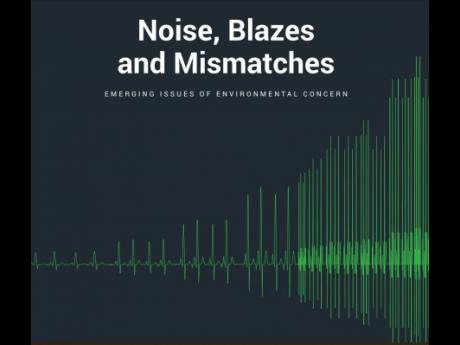Earth Today | ‘Turn down the volume’
UNEP report promotes healthy use of sound to protect human health
WITH NOISE pollution a prevailing threat to human health, particularly within cities, the United Nations Environment Programme (UNEP) has flagged the need for a relook at policies and programmes to address the problem.
In its 2022 Frontiers report titled Noise, Blazes and Mismatches: Emerging issues of Environmental Concern, the UNEP notes that the past several decades have seen policymakers achieving some progress in addressing noise pollution as an environmental and public health issue, “however, two major shortcomings have emerged”, the report noted.
“First is the inherent limitation of using a reactive approach when the primary focus is retroactively reducing noise levels. The second is thinking of sound only in terms of discomfort, such as transport and industrial noise, rather than investigating how to promote sounds that provide comfort. These two points need to be urgently addressed to achieve liveable cities and support for research-informed interventions is crucial in this process,” said the chapter of the report focused on ‘Listening to cities: From Noisy Environments to Positive Soundscapes’ and authored by Francesco Aletta.
SOLUTIONS NOW
The recommendation to answer the first shortcoming is for the consideration of environmental sounds at the earliest possible stage of planning and design to prevent them from becoming an afterthought – one that could involve significant expense.
“According to data from Europe, more than 50 per cent of actions intended to manage noise focus on the source, which is often effective but will not necessarily provide soundscape quality. A very limited percentage of measures dealing with environmental sounds resort to land use or urban planning, while growing evidence from research indicates that this approach would be the most sustainable path. Therefore, it is crucial that experts in environmental acoustics and urban soundscapes are involved in urban development processes and that they communicate with local stakeholders,”Aletta said.
“Furthermore, noise pollution should be considered within a broader range of environmental challenges through integrated policies, particularly for the combination of noise and air pollution,” the author added.
“Many countries surveyed by the European Environment Agency report successful policies that provide co-benefits, including traffic calming measures, green vehicle fleets, energy-efficient buildings, tree and shrub plantings to create and link green corridors, and incorporating down-cycled materials into engineered noise control solutions,” Aletta said further.
On the need to promote sounds that provide comfort, the report said there is need for an extension of the scope of policymaking through a shift from only managing environmental sounds when they cause noise pollution “to considering environmental sounds as opportunities for promoting healthy living environments for all age, gender and social groups”.
BEYOND SILENCE
According to the report, silence is not the only answer.
“Although desirable for some contexts like urban parks or residential areas, simple silence or quiet cannot be the standard for assessing the quality of every urban space. We need our cities to be aurally diverse and inclusive, to support mixed uses; this is something silence alone cannot deliver,” the author said.
As cities grow, noise pollution has been identified as a top environmental risk to health across all age and social groups and an addition to the public health burden. Across the European Union, for example, at least 20 per cent of citizens are currently exposed to road traffic noise levels that are considered harmful to health.
“This estimate is an average, with urban areas showing a far higher percentage,” the report revealed.
Noise pollution comes from conventional sources, such as roads, railways, airports, and industry; however, high noise levels may also come from domestic or leisure activities. At the same time, traffic and other urban noises affect not only human well-being, but also disturb and endanger the survival of species crucial to the urban environment.

